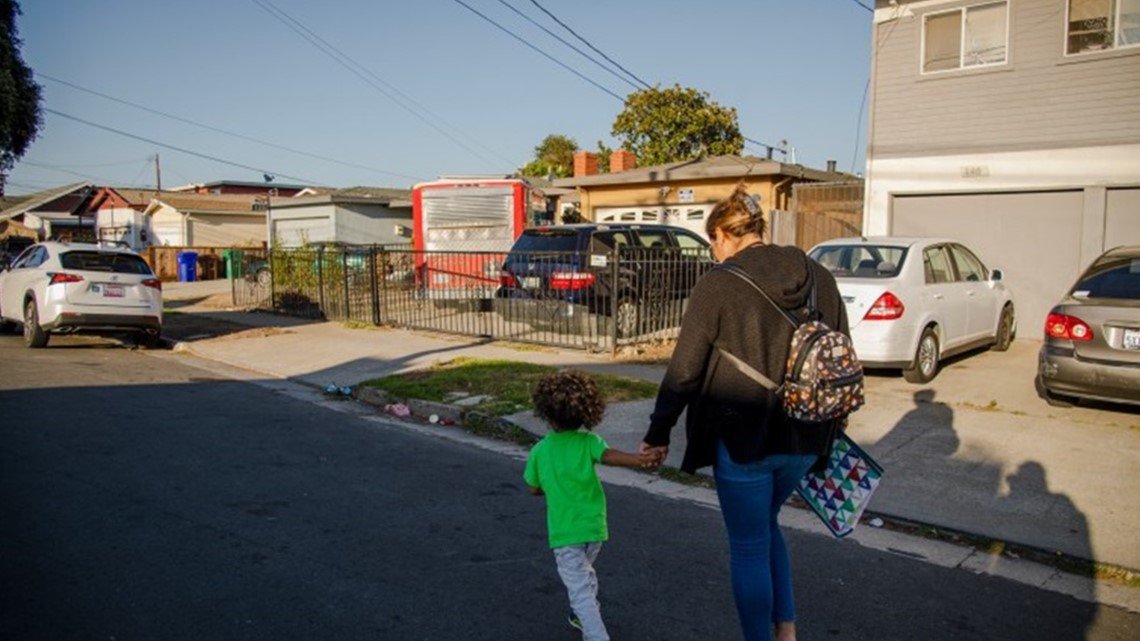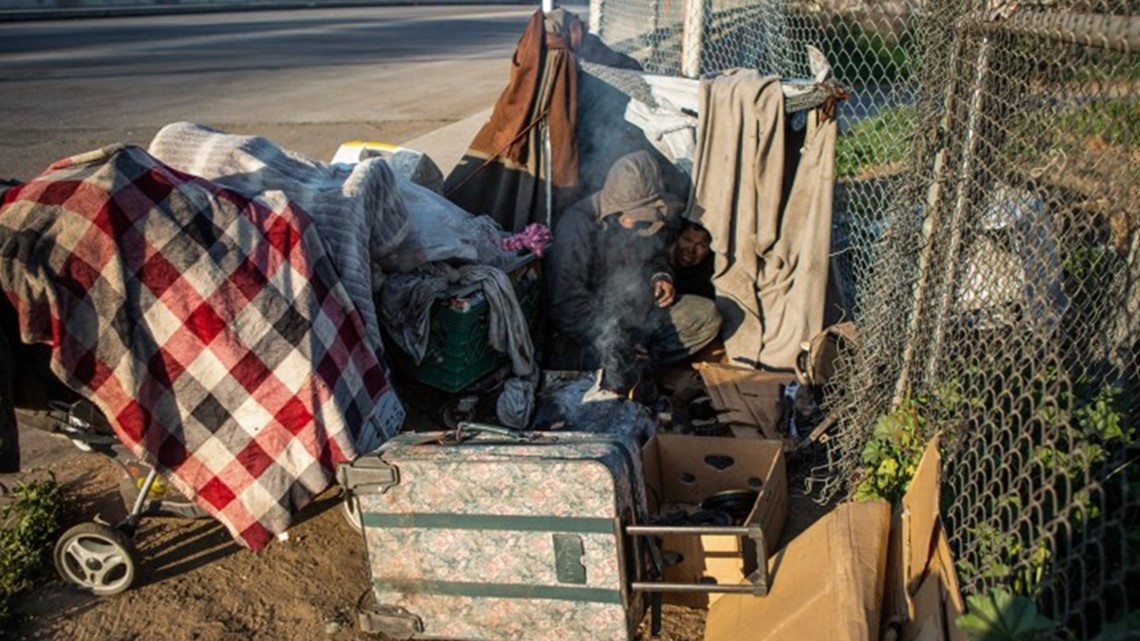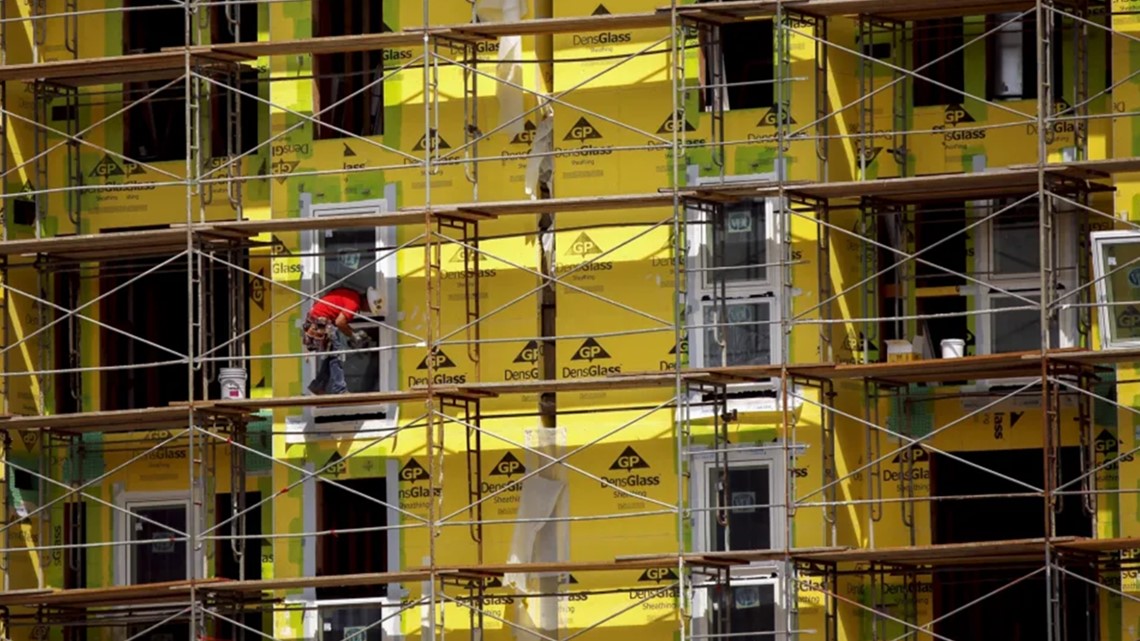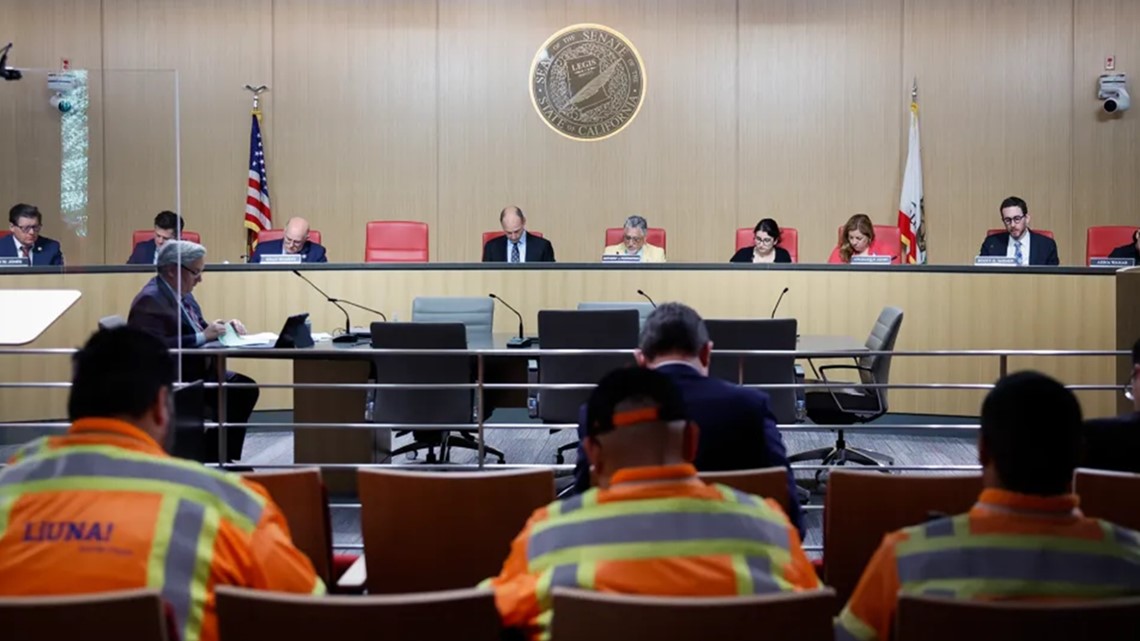SACRAMENTO, Calif. — This story was originally published by CalMatters.
The potential costs of a new policy or program always factor into the legislative process — but that’s especially true when the state is facing down a $31.5 billion budget deficit.
As the Legislature completed a key milestone this week, deciding the fates of nearly 1,200 measures with significant price tags, California’s looming revenue shortfall was on the mind.
“It is a different time that we have to operate in, so it is a lens that we have to look through all the bills,” said Assemblymember Chris Holden, a Pasadena Democrat who leads the appropriations committee. “To the extent there were some real pressures that we thought we needed to address, we did.”
Holden and his counterpart in the state Senate, La Cañada Flintridge Democrat Anthony Portantino, announced today the outcome of the “suspense file,” a biannual culling of fiscal legislation. The bottleneck of hundreds of bills that are expected to cost at least $50,000 gives the appropriations committees an opportunity to consider them — and their potential outlay — as a whole.
Portantino, who sprinkled his reading of the results with trivia about California, declined to speak with reporters after, saying that he had a flight to catch.
The hearings took place less than a week after Gov. Gavin Newsom laid out his plan to close the budget shortfall. During a press conference last Friday, the governor said he was “deeply mindful” of the Legislature’s many spending requests, but urged them not to send him a litany of expensive measures that he would be forced to veto.
“We have a collective responsibility, and at the end of the day, I guess I’m the backstop,” Newsom said. “I want a little expression of deeper understanding now of the nature of the budgetary constraints. Just get it done in the budget. If it’s your top priority, work with your colleagues.”
Even with that warning, most of the bills on the suspense file advanced. The Senate approved 326 measures, or 78%, and the Assembly approved 535 measures, or 71%.
But those numbers will pare down even further in the weeks ahead, Holden noted, as bills go before their entire chambers for floor votes. Legislation must pass its house of origin by June 2 to continue this year, an intense period taking place against the backdrop of budget negotiations.
“The governor obviously sent a shot across our bow to think that way as well,” Holden said.
Here are some of the proposals that died on the suspense file:
Expanded tax credits for poor families
The Assembly appropriations committee shelved two bills favored by anti-poverty advocates that would have expanded tax credits for the state’s lowest-income residents.
The bills, authored by Democratic Assemblymembers Miguel Santiago of Los Angeles and Mike Gipson of Gardena, would have delivered a collective $1 billion, primarily to poor families with children, by boosting the minimum payout provided through the state’s Earned Income Tax Credit and expanding who is eligible for the Young Child Tax Credit.
The proposals were the latest attempt by advocates in California to bolster the state’s direct cash programs for the poor since the expiration of the expanded federal Child Tax Credit last year, which temporarily sent thousands of dollars to most families with children in the U.S. and led to dramatic decreases in child poverty.


The California bills had bipartisan support despite the hefty price tag.
Anna Hasselblad, director of public policy at United Ways of California, said the bills’ failure was disappointing, but said lawmakers still support the efforts. She pointed out that boosting the Earned Income Tax Credit is included in the state Senate’s budget plan.
Oil industry wins
Two climate change bills that could have taken a financial toll on the oil and gas industry met their end in the appropriations void today.
One measure held in the state Senate appropriations committee would have allowed civil penalties on the operators of oil and gas wells located near residences, schools and hospitals. Another bill was aimed at increasing California’s ambitious greenhouse gas emissions goals even further.
Environmental advocates decried the failure of the climate change measures while an oil industry representative told CalMatters they were bad policy for the state’s businesses.
“The world is desperate for climate leaders like California to step up,” Nicole Rivera, government affairs director for the Santa Rosa-based Climate Center, said in a statement. Rivera added that she intended to continue to work to hold the state’s “polluters accountable.”
In response, Kevin Slagle, a spokesman for the Western States Petroleum Association, said that both bills were opposed by broad coalitions.
“They weren’t good bills,” Slagle said. “It becomes unhelpful that any time an activist group doesn’t like a bill the position is, well, the oil industry didn’t like it; what it really comes down to is that these weren’t good policies.”
Senate Bill 556 would have made the owners and operators of oil and gas wells liable for illnesses such as respiratory ailments, premature births, high-risk pregnancies and cancers within an area of 3,200 feet from those sites. The bill would have levied civil penalties of as much as $1 million per person.


The author of the bill, state Sen. Lena Gonzalez, a Long Beach Democrat, saw a related measure banning new drilling within 3,200 feet of homes, schools, nursing homes, and hospitals pass last year. But that law was put on hold after the oil industry backed a signature-gathering campaign to qualify a referendum placing the measure before voters in November 2024.
“Fossil fuel executives have known for decades that drilling in neighborhoods puts our communities at risk of cancer, asthma, pregnancy complications, and other illnesses,” said Rivera of the Climate Center. “Instead of acting to protect public health and our shared climate, they’ve lobbied and spent millions of dollars convincing elected officials to look the other way.”
Sagle, of the petroleum association, said the bill would have held companies liable without proving they were the ones doing the harm and that’s why the bill drew opposition from groups including the California Chamber of Commerce.
“That is a guilty until proven innocent approach to public policy,” Sagle said.
The other closely-watched climate change bill to die today was Senate Bill 12, which would have increased the state’s greenhouse gas emissions target to 55% below 1990 levels by 2030. Currently, California law calls for a 40% reduction.
The failure of the two measures comes after Gov. Newsom last week held firm on $6 billion in cuts from a $54 billion five-year climate package approved last year.
Facing a deteriorating fiscal situation, the governor last week proposed a $1.1 billion climate bond to be put before voters to avoid additional cuts.
A rare defeat for abortion access advocates
For the first time, a bill backed by the California Future of Abortion Council and Legislative Women’s Caucus was quietly killed in the Assembly appropriations committee today. The measure, authored by Assemblymember Pilar Schiavo, targeted crisis pregnancy centers, requiring the state Department of Public Health to launch a public awareness campaign about the anti-abortion and often religiously affiliated centers, reinforcing what abortion options are available in California.
Abortion rights advocates accuse crisis pregnancy centers of misleading pregnant patients about their options and posing as health care facilities when few are licensed as such. Supporters of the centers counter that they provide women with supportive services like free pregnancy tests and counseling. A previous California law requiring crisis pregnancy centers to provide information on abortions ran afoul of the U.S. Supreme Court’s conservative majority in 2018, which struck the law down for infringing on freedom of speech protections.
“Across California crisis pregnancy centers outnumber abortion clinics by 20%,” Schiavo, a Democrat from Santa Clarita, said in a recent health committee hearing. “These crisis pregnancy centers shame, intentionally mislead and lie to women about their reproductive health care options to block them from accessing abortion care.”
Though more than a dozen abortion protection bills sailed through the Legislature last year, this measure ran into opposition from members in rural areas where Alternatives Pregnancy Center runs women’s health clinics. Alternatives is one of the few medically licensed crisis pregnancy centers in the state and can provide ultrasounds, prenatal care and well-woman visits.


A killing blow for health care affordability
Advocates were surprised by the death of another measure authored by Schiavo, which sought to give approximately 900,000 Covered California enrollees additional financial relief by eliminating out-of-pocket health care costs.
The bill, AB 1208, would have required the state to use money set aside in the Health Care Affordability Reserve Fund to lower patient costs. That money, which comes from a tax penalty on uninsured Californians, has been the subject of controversy in recent months. Legislators and advocates have questioned why the nearly $1.4 billion of revenue hasn’t been plowed back into the state’s health care system.
Despite early-term promises to use the tax penalty on financial assistance, Newsom’s budget this year moves $333 million from the reserve to the general fund to help with the state’s ballooning deficit.
Rachel Linn Gish, spokesperson for Health Access California, which sponsored the bill, said advocates would continue to push for the money through the budget process and that it had strong support from legislators.
Earlier this month, Senate Democrats pledged to preserve the money in their budget proposal, but Assembly leadership would not go so far as to say whether the funds would be part of their budget priorities.
Homelessness measures blocked
Two bills that would have pushed cities to do more to tackle the statewide homelessness crisis won’t make it into law this year.
One would have required cities to plan enough housing to serve their entire homeless communities. Instead, the Senate Appropriations Committee turned Senate Bill 7 by Encinitas Democrat Catherine Blakespear into a two-year bill, meaning it won’t be considered again until January.
“I’m disappointed,” Blakespear said. “Homelessness is a top and urgent statewide issue. And we need to be laser-focused on solving homelessness and ensuring that people are not living in our public spaces.”
Blakespear wanted to impose requirements for both homeless shelters and permanent homeless housing, as well as to provide money to fund their construction. But she hadn’t identified where that money would come from, and it was a tough ask when the state is facing a large budget deficit.


Another bill that wound up on the cutting room floor would have made it easier to build temporary modular housing — such as tiny homes — for homeless residents throughout the state. Under Senate Bill 634 by Josh Becker, a Democrat from San Mateo, developers could set up these units temporarily on lots that are currently vacant but may be earmarked for future, larger-scale developments, making use of land that sits empty while builders go through years-long permitting processes.
The bill would have streamlined approvals for the temporary projects, and in certain cases, would have forced cities to give the OK — preventing “NIMBY” neighbors from quashing projects they don’t want in their backyards.
But opponents, including the Western Center on Law and Poverty, worried the temporary housing could end up being unsafe or low quality.
Becker plans to try again next year. “We’re going to figure out how to get it done,” he said.
A labor deal on housing?
A bill aimed at making it easier to build apartment buildings — arguably the most consequential and fought-about housing proposals of the year — made it out of committee, but with a few changes that might help mend a labor-on-labor spat that has riven the Capitol for months.
The bill, by San Francisco Democratic Sen. Scott Wiener, would make permanent a 2017 state law that lets multi-family housing developers skip what can be a long and expensive permitting process in parts of California that haven’t built as much as state housing officials say they should. In exchange, the developers have to set aside some units for lower-income residents and abide by stricter labor standards.
Those worker rules came in two flavors: For 100% affordable housing projects, developers have to pay higher wages. For those that include market-rate units, developers also have to hire a certain number of apprenticeship graduates, the vast majority of whom are union members.
Wiener nixed the union-hiring rule in this year’s bill, citing its less than encouraging tract record in actually getting housing built. The state’s unionized carpenters’ along with a handful of other construction worker unions backed Wiener’s move, betting they had more to gain from streamlined projects than from holding out for the strict union-hiring standard.
But the State Building and Construction Trades Council, an influential organized labor coalition, went to legislative war against the change.
That impasse may have finally broken in the Senate Appropriations Committee.
Under the new terms:
- The union-hire language is back, but only for mixed-income projects over 85 feet tall;
- If a developer tries to satisfy the rule and can’t get more than two qualifying bids, they move on, reverting back to the higher wages rule.


It’s unclear whether that will be enough to win a truce with the building trades council. In a written statement, president Andrew Meredith said the tweaks made the bill “better,” but that the group’s affiliates had yet to meet to “discuss next steps.”
Another major change in the bill’s language: Instead of being a permanent part of state law, the law now sunsets at the end of 2035. That means we get to do this all over again in 12 years.
New year, same story for community college faculty
Part-time faculty lost out on some big pay raises. The Assembly appropriations committee killed two bills from Los Angeles Democrats that would have compensated part-time faculty at the same rate as their full-time peers.
One bill, by Assemblymember Miguel Santiago, would have given both types of employees the same hourly pay. He proposed an identical bill last year, only to have it fail in the same committee. A bill from Assemblymember Jacqui Irwin would have paid part-time faculty at the same rate as full-time faculty for time spent giving office hours. The state has already invested more than $100 million to fix this disparity.
Part-time faculty represent the majority of instructors and teach roughly half of classes, according to an analysis by the Legislature. However, in 2021, full-time faculty earned roughly three times more.
In a statement to the Legislature, the Association of California Community College Administrators said Santiago’s bill had “ambiguous” language and that both bills would weaken “autonomy” of local districts.
Meanwhile, community college students are still struggling to graduate on time. The state has invested roughly $175 million since 2017 to streamline majors and educational programs so that students can get an associate’s degree in two years, but the success so far is mixed.
Assemblymember Eloise Reyes, a San Bernadino Democrat, wanted to revamp the system again, costing the state more than $245 million, according to an analysis by the Legislature.
Those changes will have to wait: The Assembly committee killed her bill, too.


Criminal background checks
The Senate committee dashed a proposal by state Sen. Lola Smallwood-Cuevas, a Los Angeles Democrat, to further tighten restrictions on when employers can seek out a job applicant’s criminal history. Advocates said the bill was necessary — despite a 2017 law prohibiting employers from inquiring about criminal history until after they make a tentative job offer — because there are other ways bosses can research applicants’ records.
Initially a blanket ban on considering applicants’ criminal records at all, this year’s bill had been pared down in a different committee after objections from business groups, including the California Chamber of Commerce, which included it on its “job killer” list. Employers still found the bill’s “voluminous number of administrative requirements” onerous, said Chamber spokesperson Denise Davis.
Smallwood-Cuevas said in agreeing to amend the bill, she had already conceded her initial goal to “make background checks the exception, not the rule.”
“Right out the gate the Chamber and a lot of business interests came out and forced us to take amendments,” she said. “We just met a lot of opposition.”
Who can own farmland
So many bills flow through the Legislature that it’s possible, in the rush of activity, for a bill to escape the notice of even dedicated industry lobbyists.
In 2022, a bill that would have banned foreign governments from buying, leasing, or holding a controlling interest in California agricultural land sailed through. It didn’t receive a single “no” vote and didn’t draw any formal support or opposition from agriculture groups.
“To be quite blunt, this bill flew under a lot of people’s radar last year,” Ian LeMay, president of the California Fresh Fruit Association, said last month. His organization lobbied the Newsom administration to veto it, LeMay confirmed.
Newsom ultimately did veto the bill, saying a data-collection component of the bill would create “arduous responsibilities.”


State Sen. Melissa Hurtado, a Bakersfield Democrat, introduced the bill again this year with a few tweaks. But this time she had to navigate choppier waters: More than a dozen farming and industry groups lined up in opposition, asking that the bill be amended. Some wanted the bill to ban a narrower group of foreign governments — countries that have “nonmarket” economies, and those that the federal government has determined pose a national security threat.
The bill also drew concern from some lawmakers in an April hearing. Sen. Dave Min, a Costa Mesa Democrat and vice chairperson of the AAPI legislative caucus, said “I think if we pass this bill, that we’re going to be sending a signal to the country … that California is jumping in on the xenophobia and anti-China bashing that we’ve seen.”
Today, the bill was killed earlier in the legislative process than last year.

